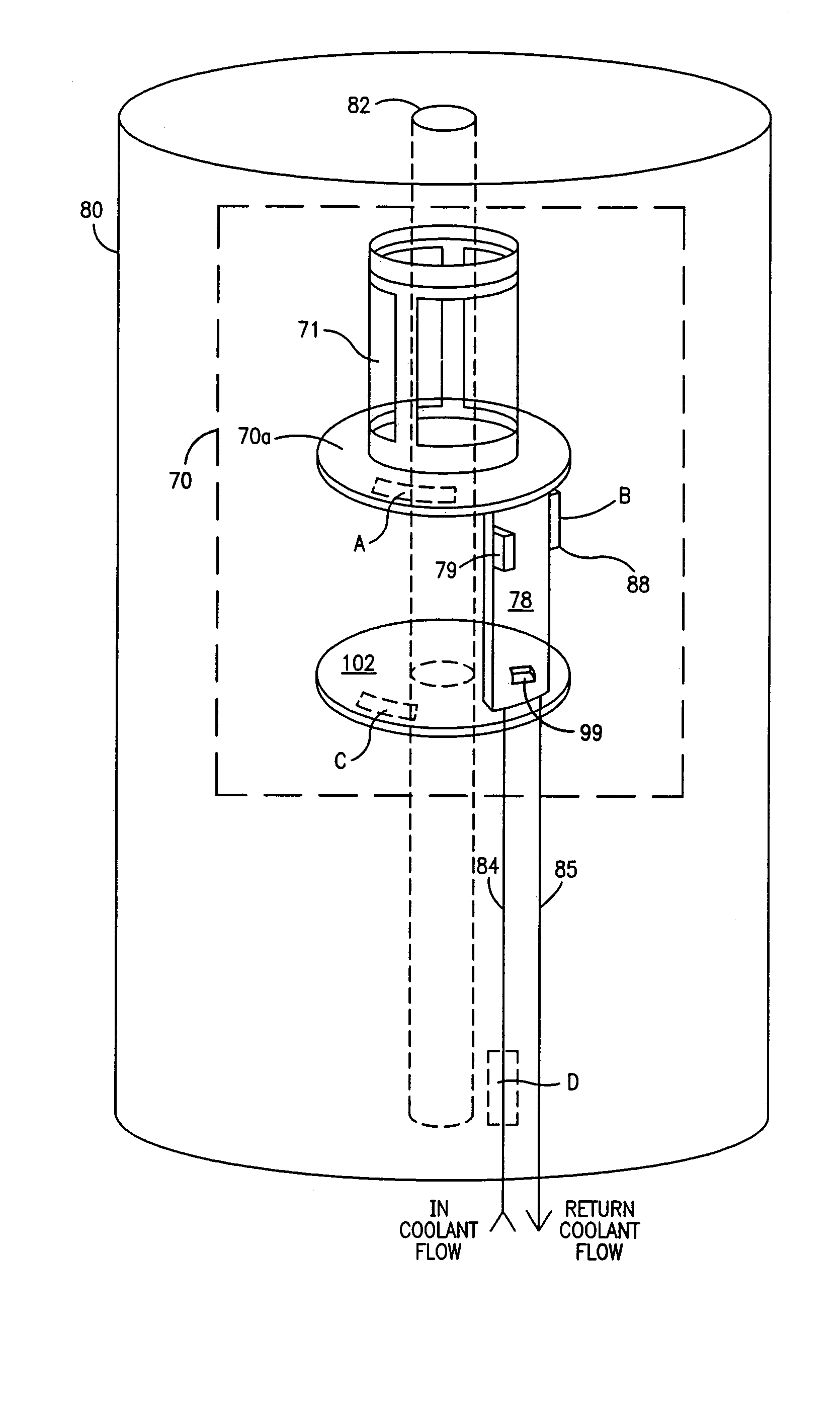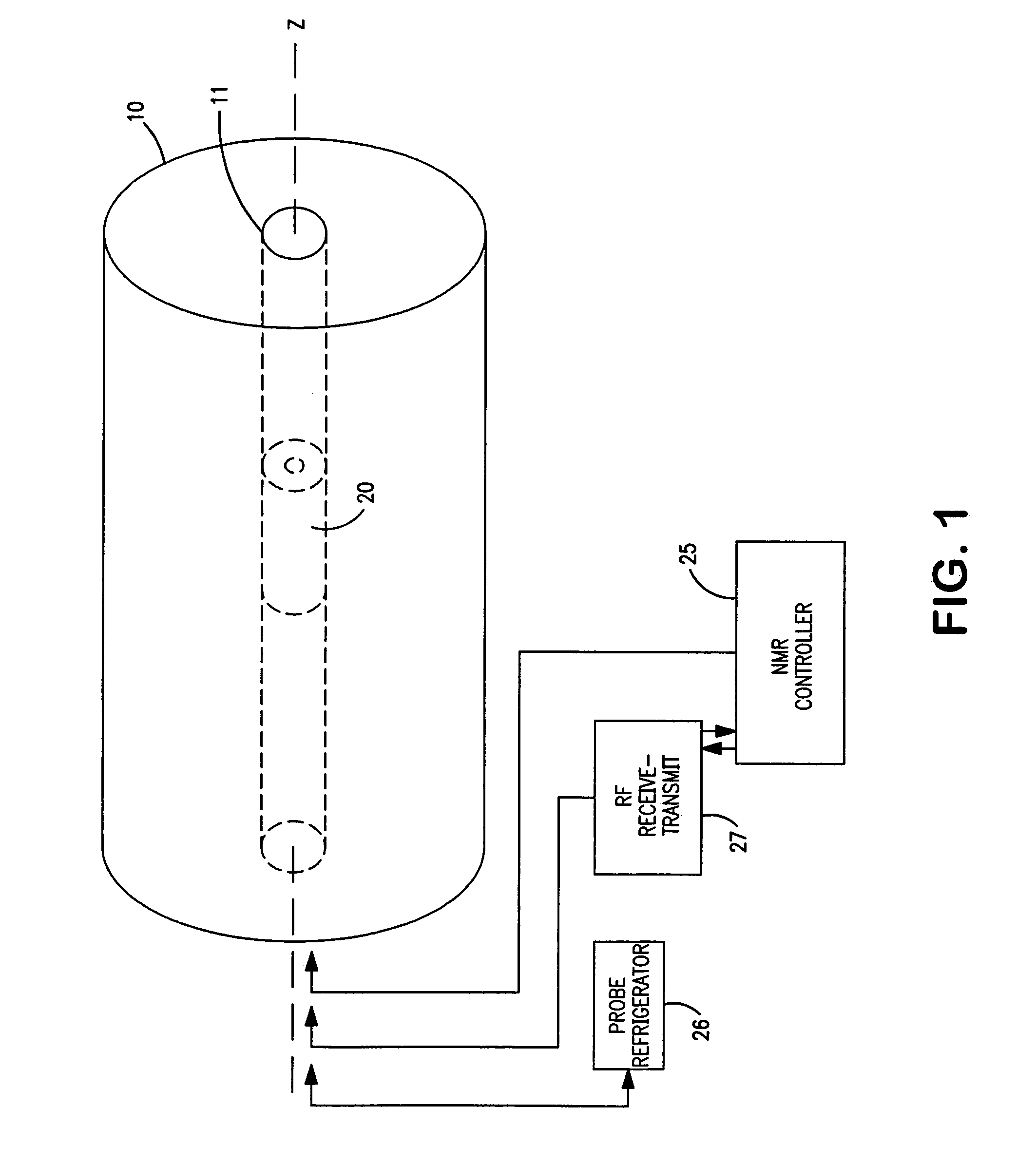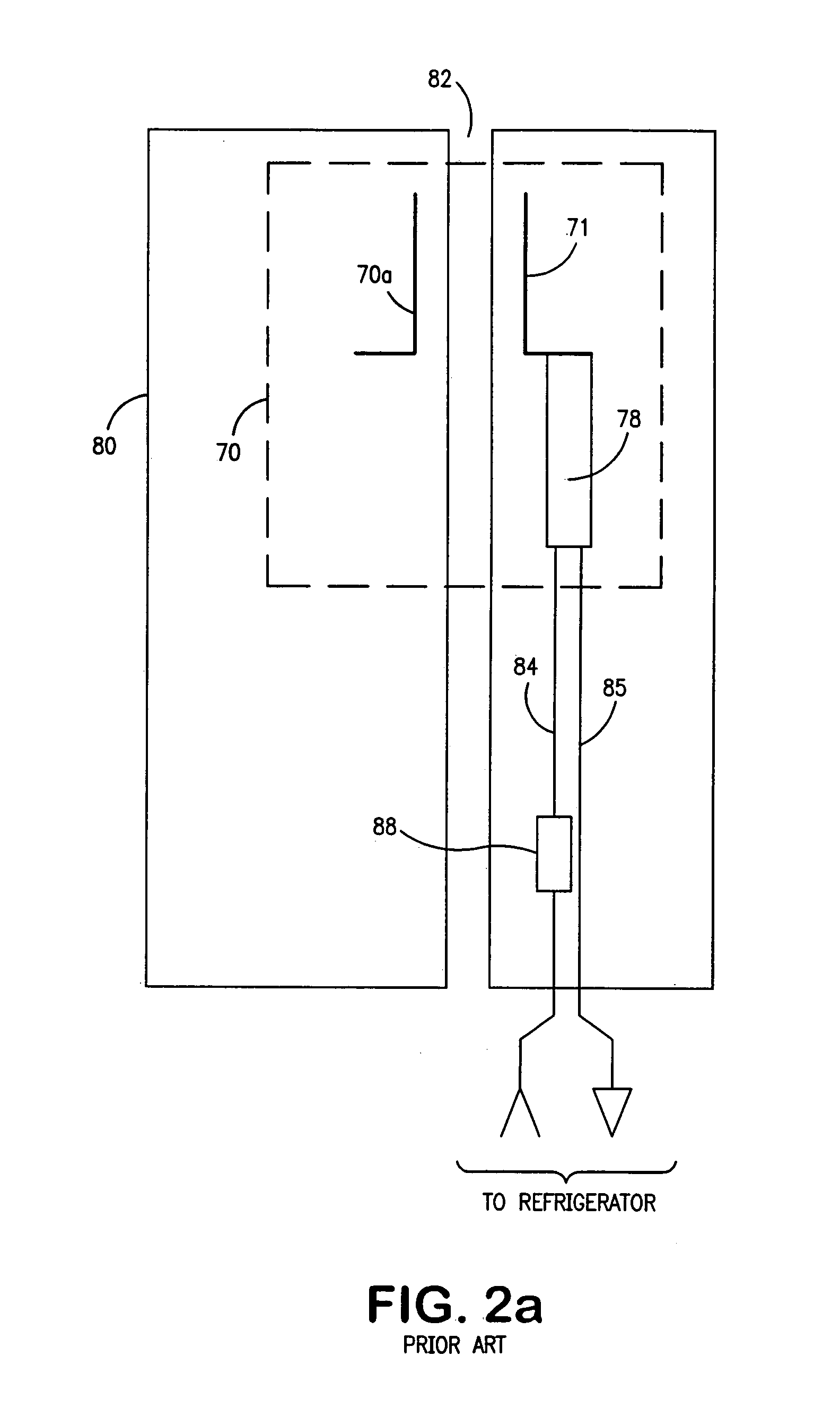Cryogenic NMR probe
a cryogenic nmr and probe technology, applied in the field of nmr probes, can solve the problems of increasing the thermal load of the heat exchanger, temperature rise, magnetic field disturbance, etc., and achieves the effects of improving the thermal regulation of the cold head, improving the thermal stability of the cold probe components, and robust and reliable cryo-pumping
- Summary
- Abstract
- Description
- Claims
- Application Information
AI Technical Summary
Benefits of technology
Problems solved by technology
Method used
Image
Examples
Embodiment Construction
[0015]The context of the present work is conveniently described with the aid of FIG. 1. Please note that wherever convenient, the same numeric label is retained among the several embodiments and figures.
[0016]A superconducting magnet cryostat 10 includes a bore 11. A probe cryostat 20 has a similar outer annular geometry coaxial with bore 11 and a central coaxial bore of cryostat 20 defining a sample bore 82 shown in FIG. 2a. The sample (not shown) is typically studied at room temperature or some selected temperature. The sample is thermally isolated from the internal low temperature of the probe cryostat 20 and introduced along axis z. Magnet cryostat 10 and probe cryostat 20 are typically separate and independent structures although this is not a requirement. Refrigeration for probe cryostat 20 as well as RF and DC power and control signals are communicated to probe cryostat 20 through bore 11. Probe refrigerator unit 26 is of known design as is RF receive-transmit unit 27.
[0017]O...
PUM
 Login to View More
Login to View More Abstract
Description
Claims
Application Information
 Login to View More
Login to View More - R&D
- Intellectual Property
- Life Sciences
- Materials
- Tech Scout
- Unparalleled Data Quality
- Higher Quality Content
- 60% Fewer Hallucinations
Browse by: Latest US Patents, China's latest patents, Technical Efficacy Thesaurus, Application Domain, Technology Topic, Popular Technical Reports.
© 2025 PatSnap. All rights reserved.Legal|Privacy policy|Modern Slavery Act Transparency Statement|Sitemap|About US| Contact US: help@patsnap.com



